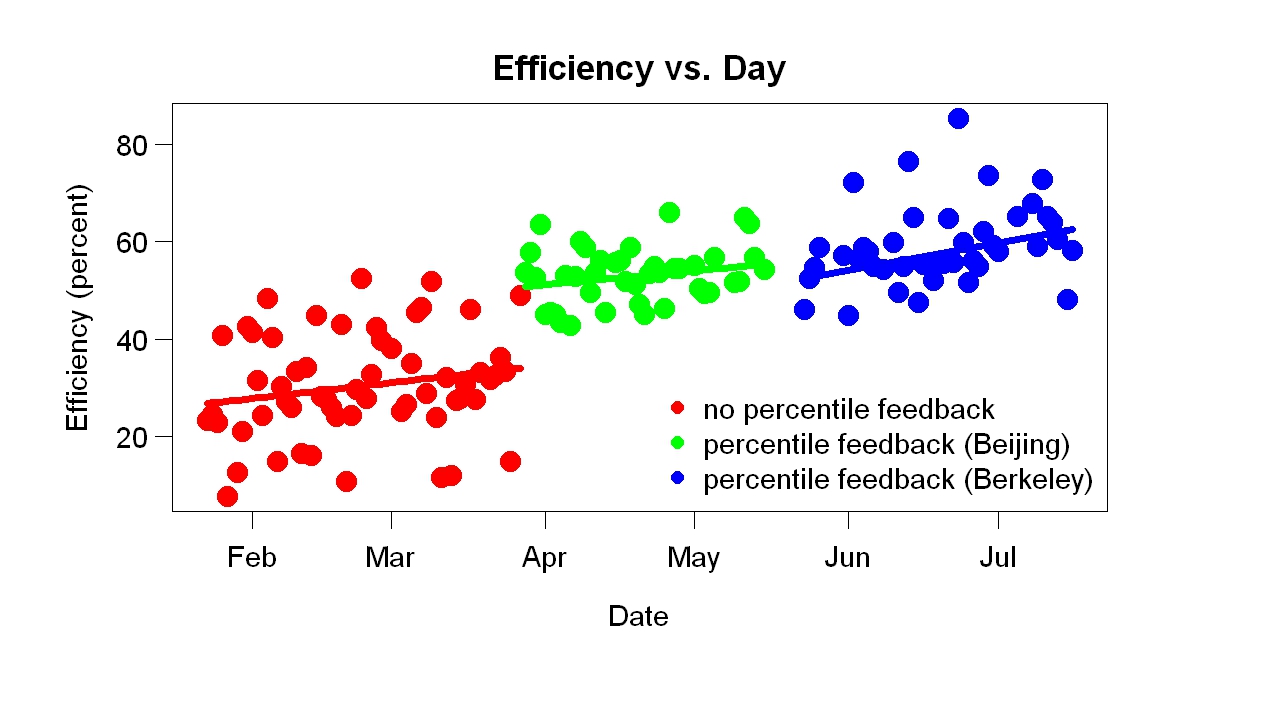In a paper (and blog post), Andrew Gelman writes:
As a statistician, I was trained to think of randomized experimentation as representing the gold standard of knowledge in the social sciences, and, despite having seen occasional arguments to the contrary, I still hold that view, expressed pithily by Box, Hunter, and Hunter (1978) that “To find out what happens when you change something, it is necessary to change it.”
Box, Hunter, and Hunter (1978) (a book called Statistics for Experimenters) is well-regarded by statisticians. Perhaps Box, Hunter, and Hunter, and Andrew, were/are unfamiliar with another quote (modified from Beveridge): “Everyone believes an experiment except the experimenter; no one believes a theory except the theorist.”
Box, Hunter, and Hunter were/are theorists, in the sense that they don’t do experiments (or even collect data) themselves. And their book has a massive blind spot. It contains 500 pages on how to test ideas and not one page — not one sentence — on how to come up with ideas worth testing. Which is just as important. Had they considered both goals — idea generation and idea testing — they would have written a different book. It would have said much more about graphical data analysis and simple experimental designs, and, I hope, would not have contained the flat statement (“To find out what happens …”) Andrew quotes.
“To find out what happens when you change something, it is necessary to change it.” It’s not “necessary” because belief in causality, like all belief, is graded: it can take on an infinity of values, from zero (“can’t possibly be true”) to one (“I’m completely sure”). And belief changes gradually. In my experience, significant (substantially greater than zero) belief in the statement A changes B usually starts with the observation of a correlation between A and B. For example, I began to believe that one-legged standing would make me sleep better after I slept unusually well one night and realized that the previous day I had stood on one leg (which I almost never do). That correlation made one-legged standing improves sleep more plausible, taking it from near zero to some middle value of belief (“might be true, might not be true”) Experiments in which I stood on one leg various amounts pushed my belief in the statement close to one (“sure it’s true”). In other words, my journey “to find out what happens” to my sleep when I stood on one leg began with a correlation. Not an experiment. To push belief from high (say, 0.8) to really high (say, 0.99) you do need experiments. But to push belief from low (say, 0.0001) to medium (say, 0.5), you don’t need experiments. To fail to understand how beliefs begin, as Box et al. apparently do, is to miss something really important.
Science is about increasing certainty — about learning. You can learn from any observation, as distasteful as that may be to evidence snobs. By saying that experiments are “necessary” to find out something, Box et al. said the opposite of you can learn from any observation. Among shades of gray, they drew a line and said “this side white, that side black”.
The Box et al. attitude makes a big difference in practice. It has two effects:
- Too-complex research designs. Just as researchers undervalue correlations, they undervalue simple experiments. They overdesign. Their experiments (or data collection efforts) cost far more and take much longer than they should. The self-experimentation I’ve learned so much from, for example, is undervalued. This is one reason I learned so much from it — because it was new.
- Existing evidence is undervalued, even ignored, because it doesn’t meet some standard of purity.
In my experience, both tendencies (too-complex designs, undervaluation of evidence) are very common. In the last ten years, for example, almost every proposed experiment I’ve learned about has been more complicated than I think wise.
Why did Box, Hunter, and Hunter get it so wrong? I think it gets back to the job/hobby distinction. As I said, Box et al. didn’t generate data themselves. They got it from professional researchers — mostly engineers and scientists in academia or industry. Those engineers and scientists have jobs. Their job is to do research. They need regular publications. Hypothesis testing is good for that. You do an experiment to test an idea, you publish the result. Hypothesis generation, on the other hand, is too uncertain. It’s rare. It’s like tossing a coin, hoping for heads, when the chance of heads is tiny. Ten researchers might work for ten years, tossing coins many times, and generate only one new idea. Perhaps all their work, all that coin tossing, was equally good. But only one researcher came up with the idea. Should only one researcher get credit? Should the rest get fired, for wasting ten years? You see the problem, and so do the researchers themselves. So hypothesis generation is essentially ignored by professionals because they have jobs. They don’t go to statisticians asking: How can I better generate ideas? They do ask: How can I better test ideas? So statisticians get a biased view of what matters, do biased research (ignoring idea generation), and write biased books (that don’t mention idea generation).
My self-experimentation taught me that the Box et al. view of experimentation (and of science — that it was all about hypothesis testing) was seriously incomplete. It could do so because it was like a hobby. I had no need for publications or other steady output. Over thirty years, I collected a lot of data, did a lot of fast-and-dirty experiments, noticed informative correlations (“accidental observations”) many times, and came to see the great importance of correlations in learning about causality.
